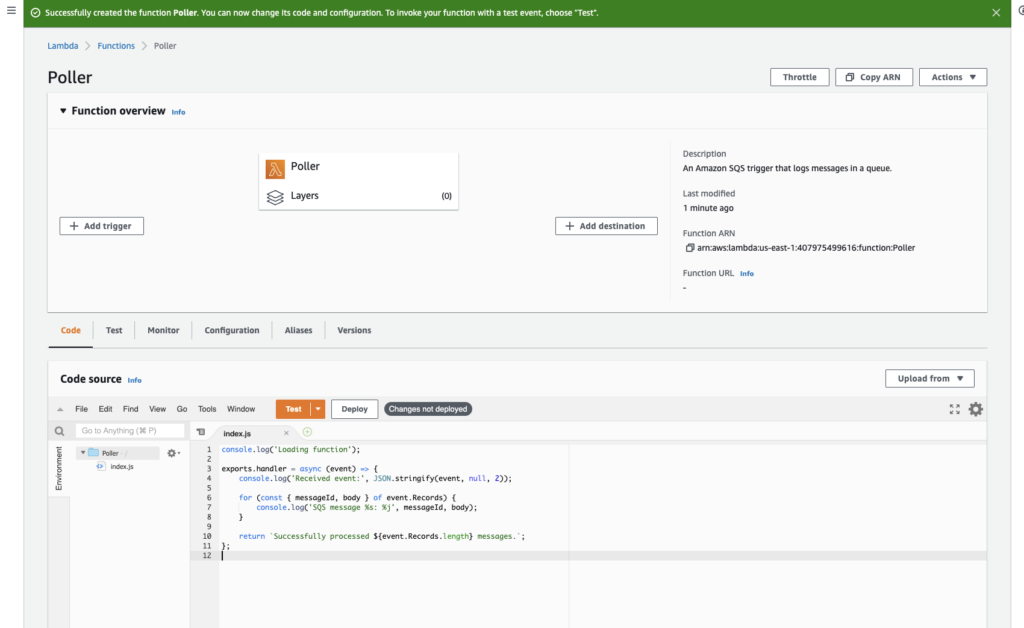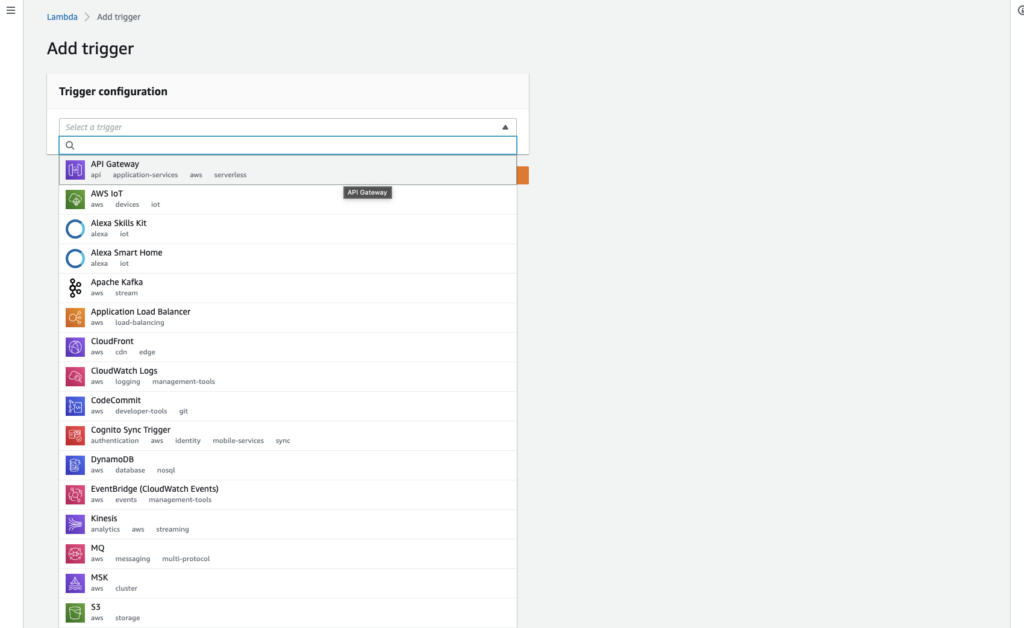AWS Lambda: What is AWS Lambda?
8 July 2022 (Updated 8 July 2022)
On this page
In a nutshell
AWS Lambda lets you run server-side code without worrying about server infrastructure. You write your code as a function that’s executed when some trigger occurs (e.g., HTTP request or a change in a DynamoDB table).
When creating a lambda (function), you specify a few options:
- Runtime: the language of your function (e.g., Node.js, Go, Python)
- Architecture: z86_64 or arm64
- Permissions: specify what permissions the lambda will have (i.e., what other AWS resources can it access and what can it do with them).
Example lambda
Here’s an example Node.js lambda:
console.log('Loading function');
exports.handler = async (event) => {
console.log('Received event:', JSON.stringify(event, null, 2));
for (const { messageId, body } of event.Records) {
console.log('SQS message %s: %j', messageId, body);
}
return `Successfully processed ${event.Records.length} messages.`;
};

Triggering a lambda
You can configure a Lambda to be triggered in response to various events (e.g., HTTP request, S3 bucket upload, DynamoDB table change, new SQS message, etc.).

Other notes
- You can specify a container image that your function should run in.
Tagged:
AWS
Thanks for your comment 🙏. Once it's approved, it will appear here.
Leave a comment